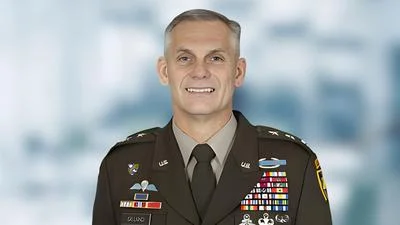“Each year, on the World Day of Remembrance for Road Traffic Victims, we mourn those who have lost their lives in traffic crashes. But mourning is not enough. We must all dedicate ourselves to ending this crisis on our roadways and creating a safer transportation system so that more families do not have to share this grief," said U.S. Transportation Secretary Pete Buttigieg. “We know roadway deaths are preventable because some places are doing a much better job at preventing them - both abroad and within certain U.S. communities. The U.S. Department of Transportation is committed to making real progress towards ending traffic fatalities and we call on everyone to join us in this national effort that can only succeed when we work together."
The World Day of Remembrance for Road Traffic Victims (WDR) is commemorated on the third Sunday of November each year. The event provides a moment to demonstrate the enormous scale and impact of road deaths and injuries on the lives of families in the U.S. and around the globe.
Last month Secretary Buttigieg met with families of victims of truck crashes to discuss ways to make trucks and the trucking industry safer.
This week Secretary Buttigieg participated in a fireside chat with the National Safety Council’s CEO Lorraine Martin and Families for Safe Streets co-founder Amy Cohen, which will be shared on the National Safety Council’s website and social media channels today and over the weekend.
This week, Secretary Buttigieg also participated in conversations with Tribal leaders in Arizona and New Mexico about ways to improve traffic safety in Tribal communities. People who are American Indian and Alaska Native have roadway fatality rates more than double the national rate on a per population basis.
In early December Secretary Buttigieg will meet with Daniel Langenkamp and other families of crash victims to continue to help keep national focus on preventing these tragedies.
Daniel’s wife Sarah Langenkamp was a Foreign Service Officer with the U.S. State Department. She served bravely and honorably around the world - including going to Ukraine to help protect Ukrainians against Russian aggression. Within weeks of returning to the U.S. this summer, she was killed while biking from an event at her son’s school.
Safety is the top priority for the U.S. Department of Transportation, here are examples of key safety actions the Department has taken over the past year:
* USDOT issued a National Roadway Safety Strategy (NRSS)
* USDOT published an on-line dashboard to track progress against NRSS commitments
* USDOT launched the Safe Streets and Roads for Al l grant program, which will provide $5 billion over five years to communities to plan and implement road safety actions and is funded by the President’s Bipartisan Infrastructure Law. The first round of awards for this program are expected to be announced in early 2023.
* USDOT is incorporating safety for all users in our guidance, grant awards, and review processes.
* USDOT has committed to making Complete Streets our default approach as we work with State and local agencies.
* USDOT’s Federal Highway Administration’s (FHWA) Tribal Transportation Safety Fund awarded $8.9 million in grants to 51 Tribes for 58 projects to improve transportation safety and announced an additional $120 million in funding through FY26 made possible by President Biden’s Bipartisan Infrastructure Law.
* USDOT’s Federal Highway Administration worked with State and local governments to obligate $3.4 billion in Highway Safety Improvement Program funding to support the progress of more than 5300 projects.
* FHWA has issued an updated collection of proven safety countermeasures and strategies - including nine new additions - to reduce highway fatalities and serious injuries on our nation’s roadways. These countermeasures are widely accessible, but underutilized roadway safety elements such as speed limit signage that can be adjusted based on weather or road condition, wider edge lines for increased visibility, and the implementation of roundabouts and bike lanes.
* FHWA has issued the Vulnerable Road User Safety Assessment Guidance to States, providing them tools to conduct a comprehensive assessment of pedestrian and bicyclist fatalities in order to inform strategies and projects States can implement to make roadways safer for vulnerable road users.
* FHWA continues to work on updating the Manual of Uniform Traffic Control Devices and expects to have completed work in the first half of 2023.
* USDOT’s National Highway Traffic Safety Administration (NHTSA) issued a final rulemaking on rear impact guards and is in the final steps of assembling the advisory committee on underride protection.
* NHTSA has made public and continued to collect more data about crashes that occur when advance technologies, specifically Automated Driving Systems (ADS) and Advanced Driver Assistance Systems (ADAS) are engaged, through its Standing General Order.
* NHTSA oversaw the first two ADS recalls in history.
* NHTSA resolved enforcement actions against three regulated entities for violations of the Vehicle Safety Act, with civil penalties of over $6 million.
* NHTSA has initiated new rulemakings to require automatic emergency braking (AEB) technologies, including pedestrian AEB on passenger vehicles; and AEB on heavy trucks.
* USDOT’s Federal Motor Carrier Safety Administration has issued a notice of proposed rulemaking that proposes to require speed limiters on large trucks.





